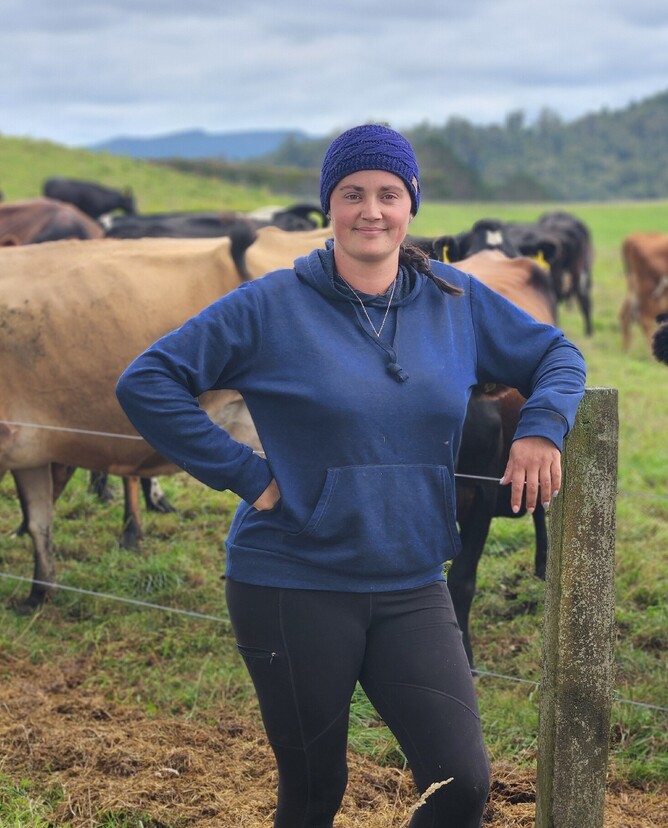Hear Maia's thoughts on this podcast too: HERE
Improving a lameness issue resulted in better body condition scores, enhancing reproduction rates. Which, in turn, allowed for more selective culling, resulting in a significant reduction in bulk tank somatic cell count. The positive outcomes stemming from the proactive monitoring system have been incredibly valuable for contract milker Maia McRae.
“When we first got here there were a lot of lame cows,” Maia explains.
“But we started using the WelFarm programme with Franklin Vets and they helped us work through the lameness problem which improved so many other areas too.”
Maia contract milks 320 cows in Hikuai in the Coromandel. She talks about how the different metrics are all linked and how it’s like getting all the puzzle pieces to fit together.
“We’ve got all the information on hand and can look at it as a whole, the collaboration of everything together is what’s most valuable.”
She describes the WelFarm programme as a welfare-focused monitoring system, using data and information like any other farm monitoring tool. WelFarm is specifically designed for the well-being of the cows.
“Happy, healthy cows are productive cows, and the only other way we can monitor them is by the vat but that’s pretty retrospective."
“With WelFarm you can use the information to correspond what is happening with how it impacts the vat too.”
She uses it throughout the season with the vet team coming out to do various scores on the herd and then she can use that information to move forward.
“It benchmarks regionally and nationally and we use it as our start and go from there, we can see where we are and where we need to move to.
“And we can look back for planning.
“We can’t ask the cows what they need, you’ve got to try and use all the information you’ve got to figure out the best plan moving forward for them.”
She also acknowledges the significant impact it has had on their relationship with their veterinarian, noting that previously, they would only call the vet when something went wrong. Where now the vet is an integral part of their team, actively helping them to achieve their goals.
“The vets are a bank of knowledge and they are seeing everything first hand and know what is and isn’t working for different farmers, so it’s great to have them more involved with our herd and proactively rather than just when there’s an issue.
“There’s also the compliance side, we supply Fonterra and need an Animal Wellbeing Plan for our Co-operative Difference, and since we have that better relationship with our vet it helps build our plan.”
Maia suspects there will be more requirements in the future around herd health monitoring and reporting so it feels like they are a step ahead already doing a lot of it as well as getting the benefits from doing it.
She also thinks the biggest thing preventing other farmers from signing up for WelFarm is the cost, but the way she looks at it is you have got to spend money to make money.
“To have all of this at your fingertips and have your vets on board, I think it’s a small cost for a big gain long term, it’s an investment."
“We have basically halved our number of mastitis cases and there’s a huge flow on from that, the savings in antibiotics alone is massive, it easily pays for itself.”
Check out welfarm.co.nz or talk to your veterinarian to find out more.

